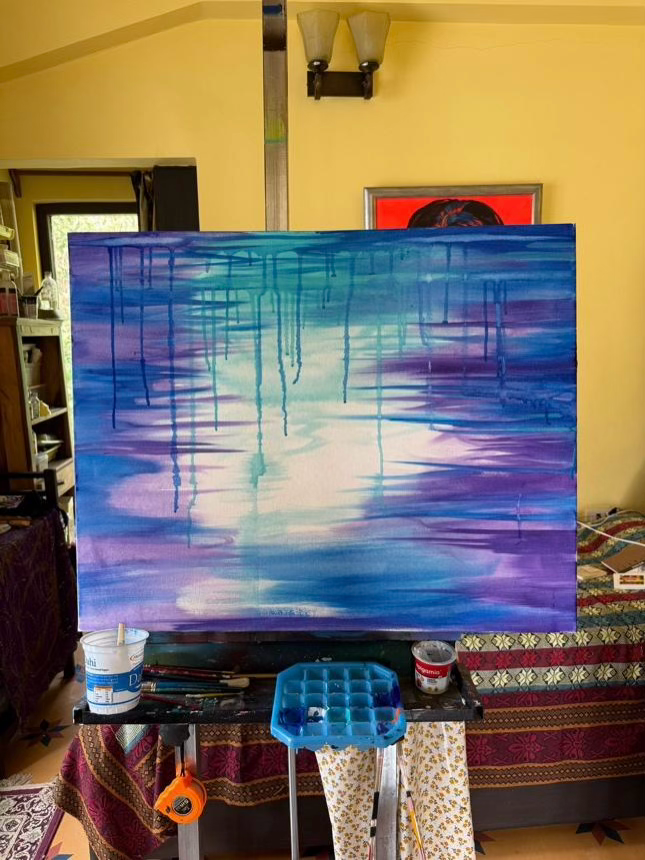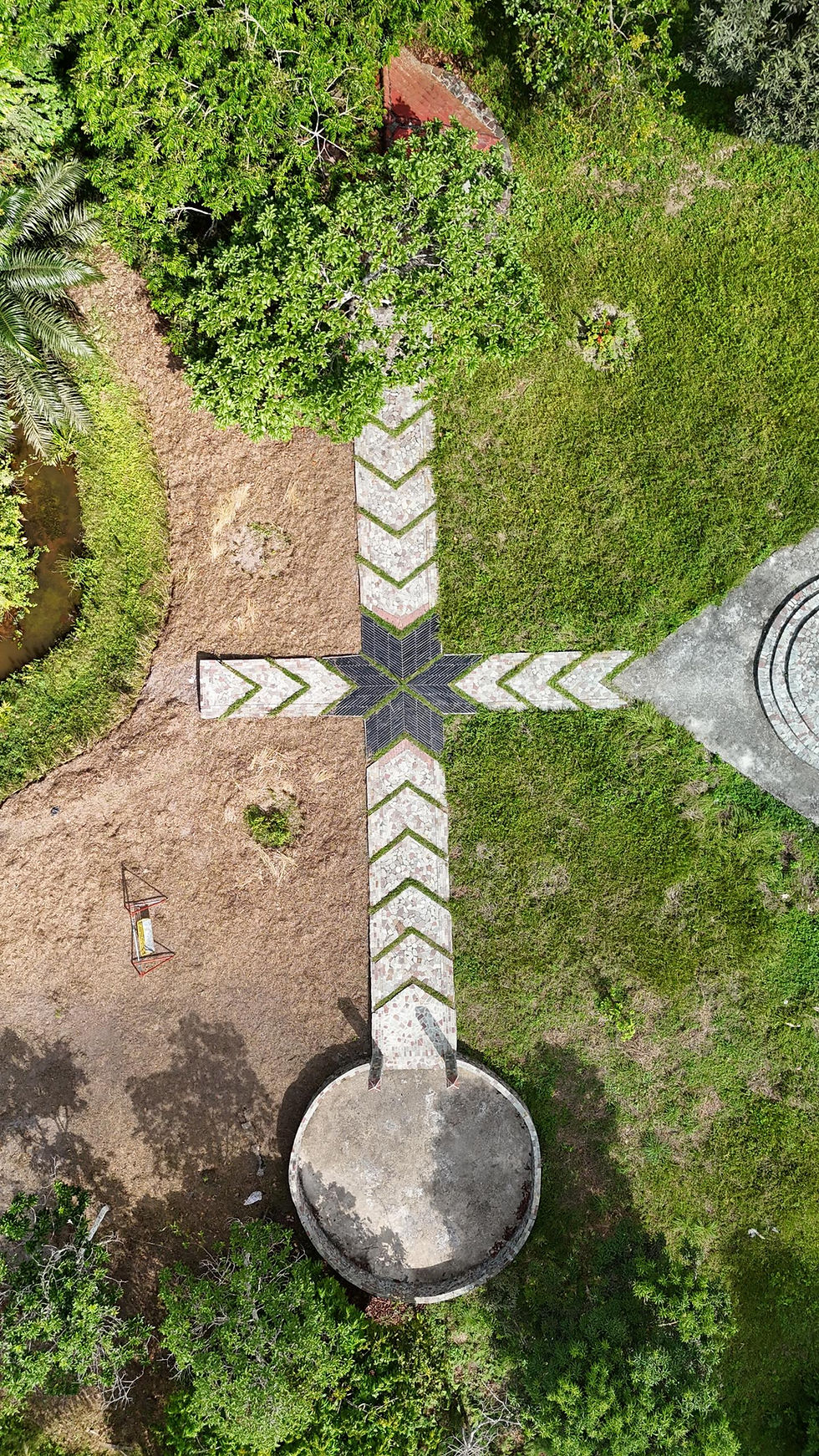Footprints, Flames, and Memory: A Painting That Retraces the Loango Slave Route
- Matatchebo

- Jul 27
- 3 min read
Updated: Sep 15
This painting tells the story of people from Central Africa who passed through the Bay of Loango to be enslaved and the return of their descendants, unfolding in each image as the artist built the story.
Special attention is paid to memorialize the routes along which the deportees into enslavement passed. Routes that were lined with mango trees and showed the way to those taking the deportees to the Bay of Loango.
Note: The routes had actually already existed before they were used to bring the deportees into enslavement. Prior to this period traders used them to transport goods to and from the Bay of Loango into the interior. After slavery was abolished the same routes functioned for transport during the colonial period.
The mangos trees (scientific name Mangifera Indica) were originally brought to the area from India/South East Asia by Portuguese staring in the thirteenth-fourtheenth century.
The development of the painting begins with the sky—empty and vast. Then, you begin to see the menacing sky, and movement, tears falling. Foretelling what is to happen.
As the journey of art making progresses, the road begins to take on more menacing colors. Reddish and orange, the colour of wounding and the laterite soil of the roads at that time.
Soon, black trees appear—they won’t stay black, though; details will be added. The trees are half-burned, and the black will gradually soften as the green of the trees starts to emerge.
A child witness, and/or maybe a child who managed to be left behind from the caravan, sits by the side of the road observing the passage of the people to be enslaved.
Shoeless footprints appear to mark the passage of the deportees into enslavement.
The spirits of people who died during the trips into enslavement are captured in the trees. They are forever witness into the present up to the time that descendants of the enslaved people return.
In the painting, the mango fruits are depicted as flames of fire, symbolizing the purifying quality of fire in Indian traditions. They represent both the pain of enslavement and the purification that occurs when the descendants of deported individuals return to their ancestral paths, fostering reconciliation among their communities. The painting also evokes the roles played by various participants in the slave trade, including the Dutch, Portuguese, and people from Central Africa and the Americas.
Start of the painting: “Nothing to see here”

Dark foreboding:

Tears in the sky:


Ominous trees

Detailing the trees and story

Trees and mangos as flames. Fire makes for difficult memories but is also purifying. According to Indian traditions, the area from which the mango trees originated, fire is purifying.
“In Hinduism, fire symbolizes transformation, purification, and divine presence, playing a crucial role in rituals and sacrifices. It evokes themes of light, offering, and spiritual significance, while also embodying danger and transformation in various narratives.”


Child witness, or person left behind…

The Matatchebo mango alley

Grieving spirits among the trees


Final version: Dark footprints of those being deported into enslavement, in one direction. The return of the deportees to witness the routes and mango trees along them is depicted by their own footprints marked as impressions of modern shoes (sneakers).



Comments